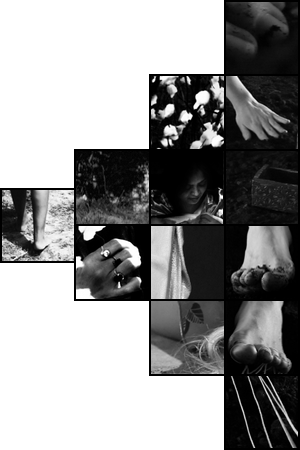| |
Maria Assunta Karini starts as a sculptor. She graduated at the École Nationale Supérieure des Beaux-Arts in Paris in the sculpture section. In Carrara she studied marble technologies, and attended courses concerning sculptural technologies on granite for four months in Montreal, Canada. Karini attended a sculpture workshop SGF in Carrara, Italy. She has participated in numerous exhibitions and competitions of monumental sculpture (Israel, Brazil, Mexico, France, Czech Republic, Korea). Some of the most prominent Karini works can be found in numerous international public and private collections.
Subsequently, she undertook a path of visual experimentation in photography and video installation. She realized various projects through the mixture of these two means of expression, thanks to an individual course of scientific research and its applications in art, and to international collaborations with multidisciplinary artistic groups. At the same time Karini developed a work of director and writer, producing several short and medium length films that have participated in national and international festivals (Cannes, Seattle, Seoul, Tehran, Clermont Ferrand, Barcelona, Athens, Warsaw, Amsterdam, etc.), and won several prizes and awards. Karini took part to many expositions in museums, foundations and galleries, among others at Contemporary Art Museum BAC in Barcelona (Spain) and Mart Contemporary Art Museum of Trento and Rovereto (Italy), MADC San Josè (Costa Rica), etc.
about Dreamsmellers
To understand the film it's necessary -first and foremost- to pay attention to the title of the film: be careful... it is called "sniffers of dreams" or more smartly "Those who smell the dreams." The title -in fact- suggests the exact perspective to enter the film: which is not of the statement or history or even that of the folk tale or documentary. The perspective to enter the film is that of the dreams, the dream-like journey, and the logic is -inevitably- that of the dreams. Which is always logical but doesn't seem to. All the characters, from the protagonist who "presents" her characters, to the characters themselves, they all "smell the dreams" and are also dreams that fit together with harsh realities or rational dreams or -eventually- with images of old films that -unintentionally- suggest the routes of those intercommunicating dreams.
But the feeling is not that of "confusion" but of a geometry of image and story in an “unstable” perfect balance. As in the songs of Captain Beefheart or in the arrhythmias of Jarmusch's images, Karini manages to hold the attention of the audience with a completely absent story, which could be in another dimension and that one senses under the skin; Karini is able to connect an almost neorealist black and white with cinematographic inventions that recall Dali's and Bunuel's video installations. And so, only upon reflection, our mind seeks and finds connections between image and reason, with all due respect to those who saw the film with the heart only, not bothering to "make ends meet" of the logic and to who enjoys the "flavour tasted" without understanding the ingredient... and only upon reflection -it was said- we realize that the liaison is / are cotton clouds, those faced by the protagonist at the beginning of the film, those tied on the hood of the Indian cars, those in which the Indian woman manager sleeps, that of the woman with skates and that cotton the protagonist is sowing at the end of the film. That act of insemination which anticipates a birth, is exactly the one that ends Karini's film closing a circle crooked as the bicycle wheels of a little girl in love with life and pestiferous.
|
|
 |
|


